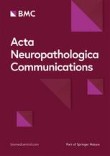
Abstract
Alpha-synuclein is the main protein component of Lewy bodies, the pathological hallmark of Parkinson's disease. However, genetic modifiers of cerebrospinal fluid (CSF) alpha-synuclein levels remain unknown. The use of CSF levels of amyloid beta1–42, total tau, and phosphorylated tau181 as quantitative traits in genetic studies have provided novel insights into Alzheimer's disease pathophysiology. A systematic study of the genomic architecture of CSF biomarkers in Parkinson's disease has not yet been conducted. Here, genome-wide association studies of CSF biomarker levels in a cohort of individuals with Parkinson's disease and controls (N = 1960) were performed. PD cases exhibited significantly lower CSF biomarker levels compared to controls. A SNP, proxy for APOE ε4, was associated with CSF amyloid beta1–42 levels (effect = − 0.5, p = 9.2 × 10−19). No genome-wide loci assoc iated with CSF alpha-synuclein, total tau, or phosphorylated tau181 levels were identified in PD cohorts. Polygenic risk score constructed using the latest Parkinson's disease risk meta-analysis were associated with Parkinson's disease status (p = 0.035) and the genomic architecture of CSF amyloid beta1–42 (R2 = 2.29%; p = 2.5 × 10−11). Individuals with higher polygenic risk scores for PD risk presented with lower CSF amyloid beta1–42 levels (p = 7.3 × 10−04). Two-sample Mendelian Randomization revealed that CSF amyloid beta1–42 plays a role in Parkinson's disease (p = 1.4 × 10−05) and age at onset (p = 7.6 × 10−06), an effect mainly mediated by variants in the APOE locus. In a subset of PD samples, the APOE ε4 allele was associated with significantly lower levels of CSF amyloid beta1–42 (p� ��= 3.8 × 10−06), higher mean cortical binding potentials (p = 5.8 × 10−08), and higher Braak amyloid beta score (p = 4.4 × 10−04). Together these results from high-throughput and hypothesis-free approaches converge on a genetic link between Parkinson's disease, CSF amyloid beta1–42, and APOE.




Δεν υπάρχουν σχόλια:
Δημοσίευση σχολίου